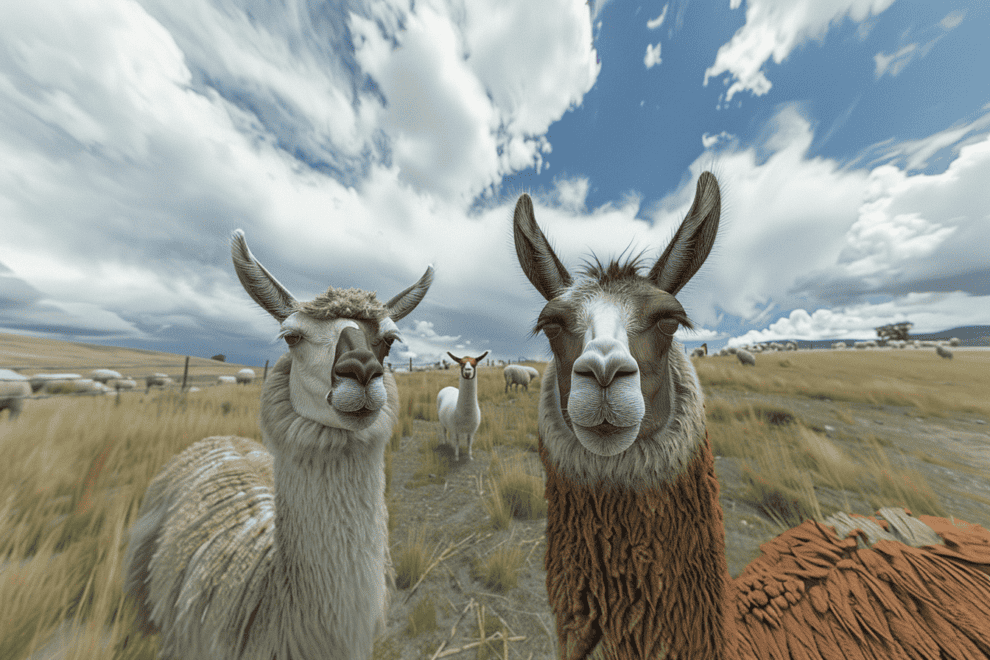Llamas are amazing guardians for livestock, thanks to their natural instincts and strong social bonds with the animals they’re protecting.
These vigilant creatures quickly detect predators by observing changes in the flock’s behavior. When a threat is near, llamas issue a distinctive alarm call, frightening off intruders like foxes and coyotes with their imposing presence and, if necessary, powerful kicks.
Easy to care for, llamas seamlessly integrate with sheep or goats, providing long-term, cost-effective protection. Introducing them can greatly reduce predation losses, making them an invaluable addition to a farm.
Llama Characteristics and Instincts
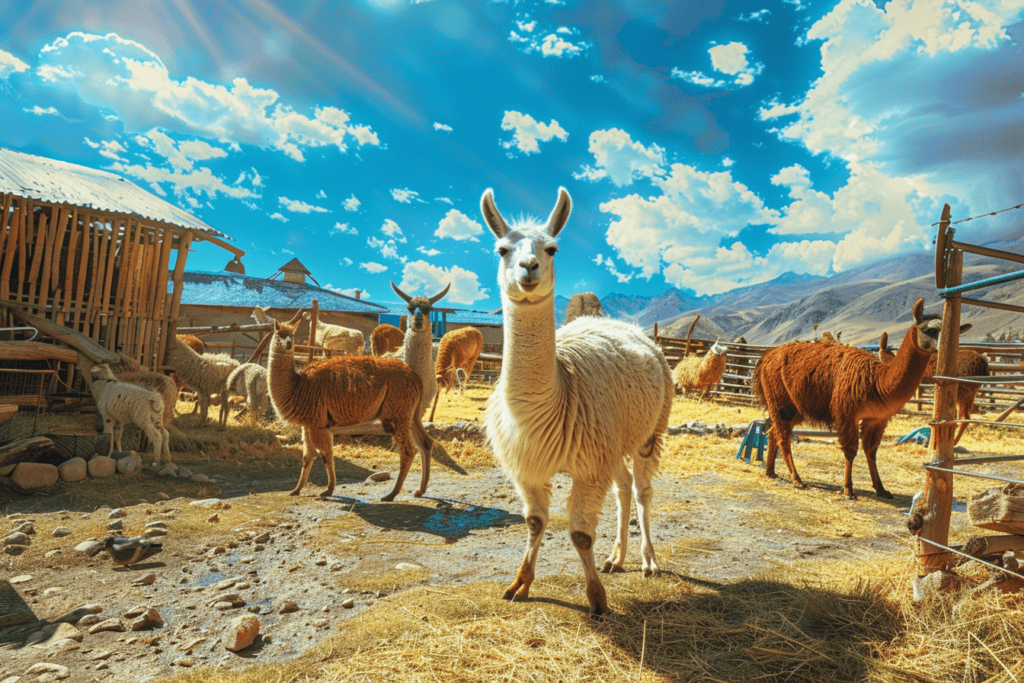
Llamas are social animals that quickly bond with livestock, making them excellent guardians. Their natural instincts drive them to protect their territory and herd, which is one of the key llama characteristics that makes them so effective in guarding livestock.
When you introduce a llama to your flock, you’ll notice their strong drive to establish a territory and defend it. This protective nature is essential for a llama-guarded environment, where they actively work to keep predators like foxes at bay.
Guardian llamas are known to rid their territory of foxes, even using a shrill neighing sound to intimidate these intruders. This vocal warning is just one example of how llamas leverage their unique traits to safeguard livestock.
Furthermore, their dedication extends to caring for the more vulnerable members of the herd, including sick and orphaned lambs. You won’t need to worry about providing special feed or care, as llamas are relatively low-maintenance.
Llamas can live for 20-30 years, offering long-term protection and peace of mind. With their strong instincts and protective characteristics, guardian llamas become invaluable assets for anyone looking to enhance the safety and well-being of their livestock.
In this way, their strong instincts and protective characteristics make them vital components of a secure livestock environment.
Bonding With Livestock
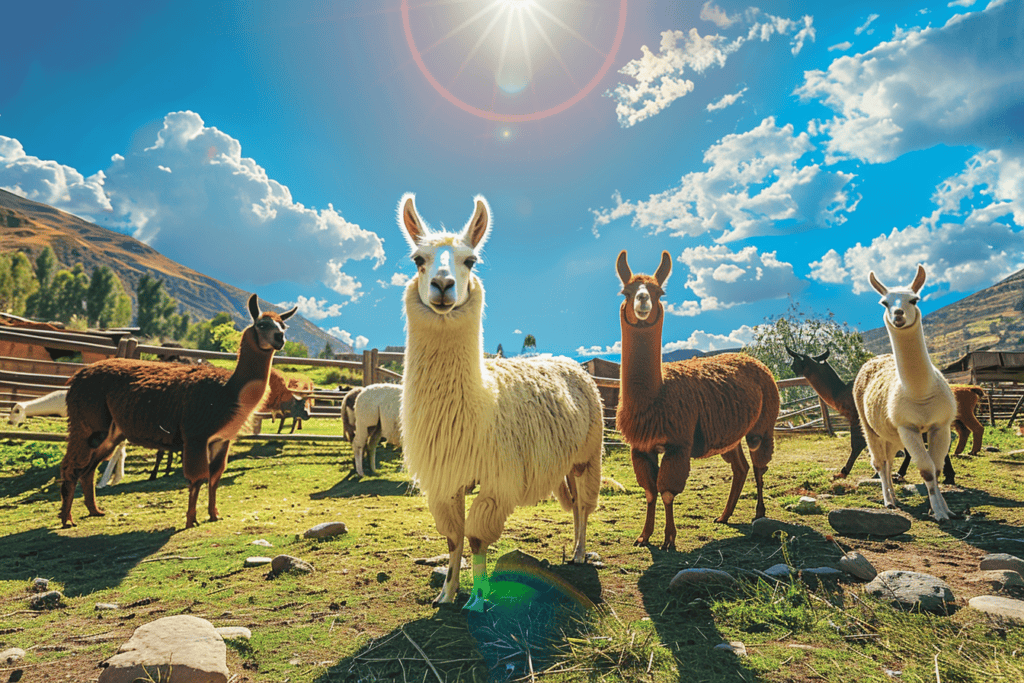
Forming a strong bond with their flock allows guardian llamas to effectively detect and respond to predators, ensuring the safety of your livestock.
This bond is essential for the llama to recognize and protect sheep and goats under their watch. When llamas guarding livestock form close relationships, they become more attuned to the flock’s behaviors and movements. This close connection helps them notice any irregularities that might indicate a threat.
Bonding with livestock doesn’t happen overnight. It requires proper socialization and training. Well-socialized llamas are more likely to integrate smoothly with sheep and goats, making them vigilant and reliable guardians.
By spending time with their charges from a young age, llamas learn to identify the individual members of their flock, which is crucial for their role as protectors.
Llamas are naturally social animals, and their ability to form bonds with other creatures enhances their effectiveness as guardians.
A strong bond means a llama feels a sense of responsibility towards their flock, prompting them to be more proactive in safeguarding them.
This connection is especially vital in environments with frequent predator threats, where the quick response of a bonded guardian can make all the difference.
Detecting Predators
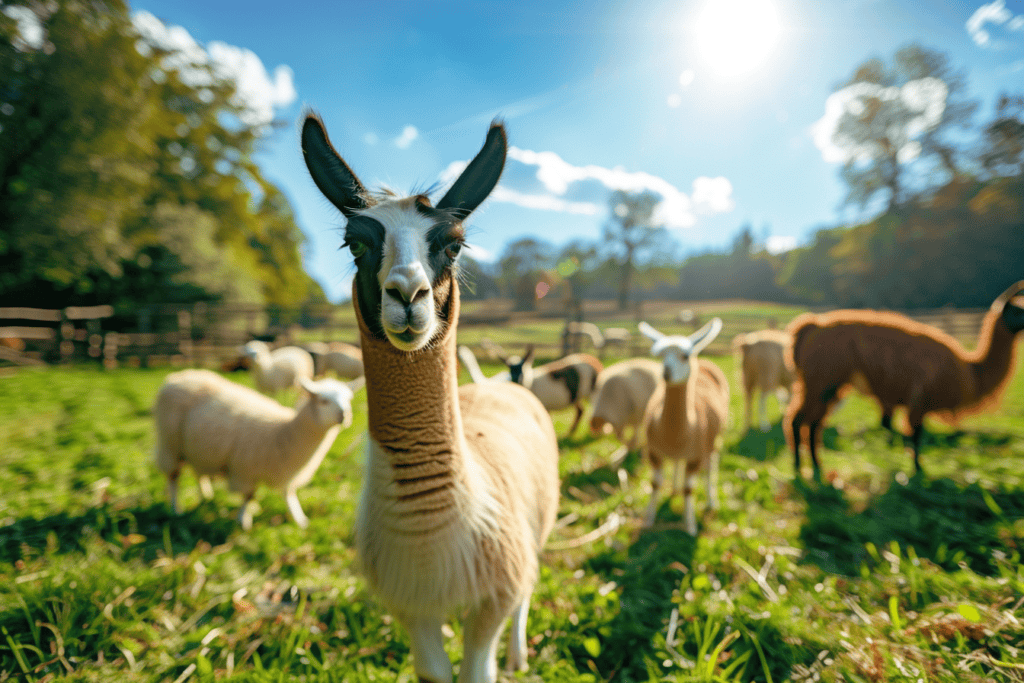
Often, guardian llamas can quickly detect predators by keenly observing any changes in the flock’s behavior and environment. They’re incredibly attentive and can sense when something’s amiss.
When there’s predator pressure, llamas will notice subtle signs of distress among the livestock, such as restlessness or unusual movements. Their sharp eyesight and acute hearing allow them to pick up on these cues swiftly.
Once a llama identifies a threat, it will emit a distinctive alarm call, alerting both the flock and you to the presence of danger.
This alarm call is loud and piercing, designed to be heard over long distances, giving everyone ample time to react.
Llamas are particularly effective against large predators like coyotes and dogs, as their imposing size and confident demeanor often deter these threats.
They may even chase off or confront these predators, using their strong legs to kick if necessary.
Llama Training Techniques
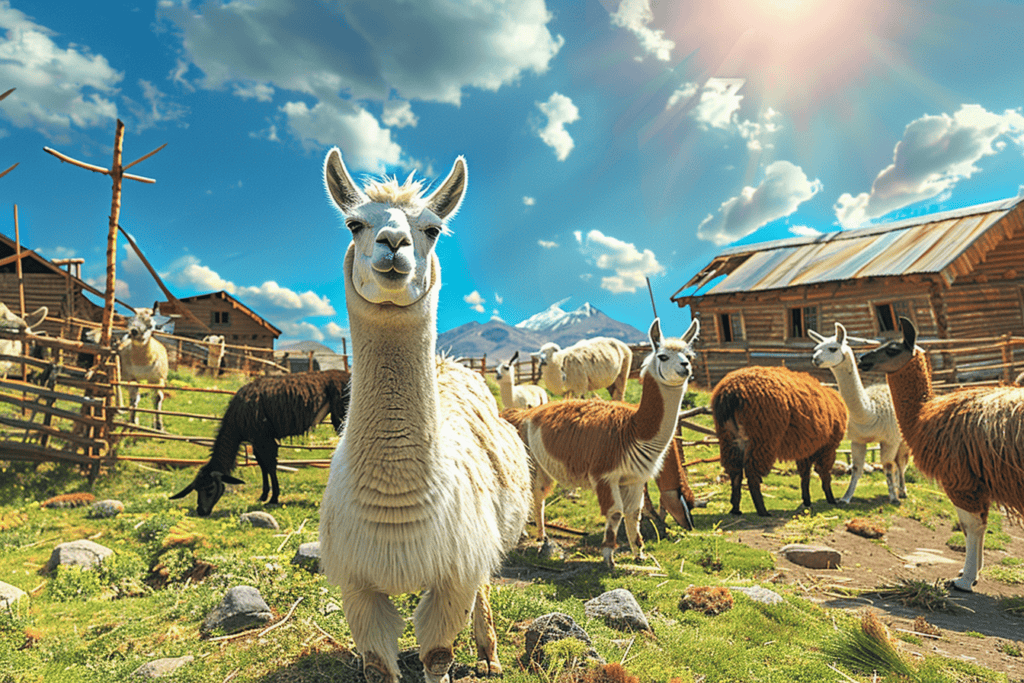
To train guardian llamas effectively, start by establishing a consistent routine.
Like livestock guardian dogs, llamas need regular interaction with the livestock they’re protecting. Begin by introducing your guard llama to the herd slowly, allowing them to form bonds and understand their role. Make sure you’re present during these initial interactions to guide and reinforce positive behavior.
When it comes to training techniques, patience is key.
Llamas are naturally curious and intelligent, so use this to your advantage. Spend time each day walking the perimeter of the grazing area with your llama, showing them where boundaries lie. Reward them with treats or verbal praise when they display protective behaviors, like alerting to unfamiliar noises or standing between the herd and potential threats.
Consistency is vital.
Train at the same time each day to create a predictable environment. This helps the llama feel secure and understand their responsibilities. Unlike livestock guardian dogs, llamas don’t require extensive commands but benefit from clear and calm direction. Over time, your llama will become an invaluable protector, using their instincts and training to safeguard your livestock from predators.
Working in Pairs
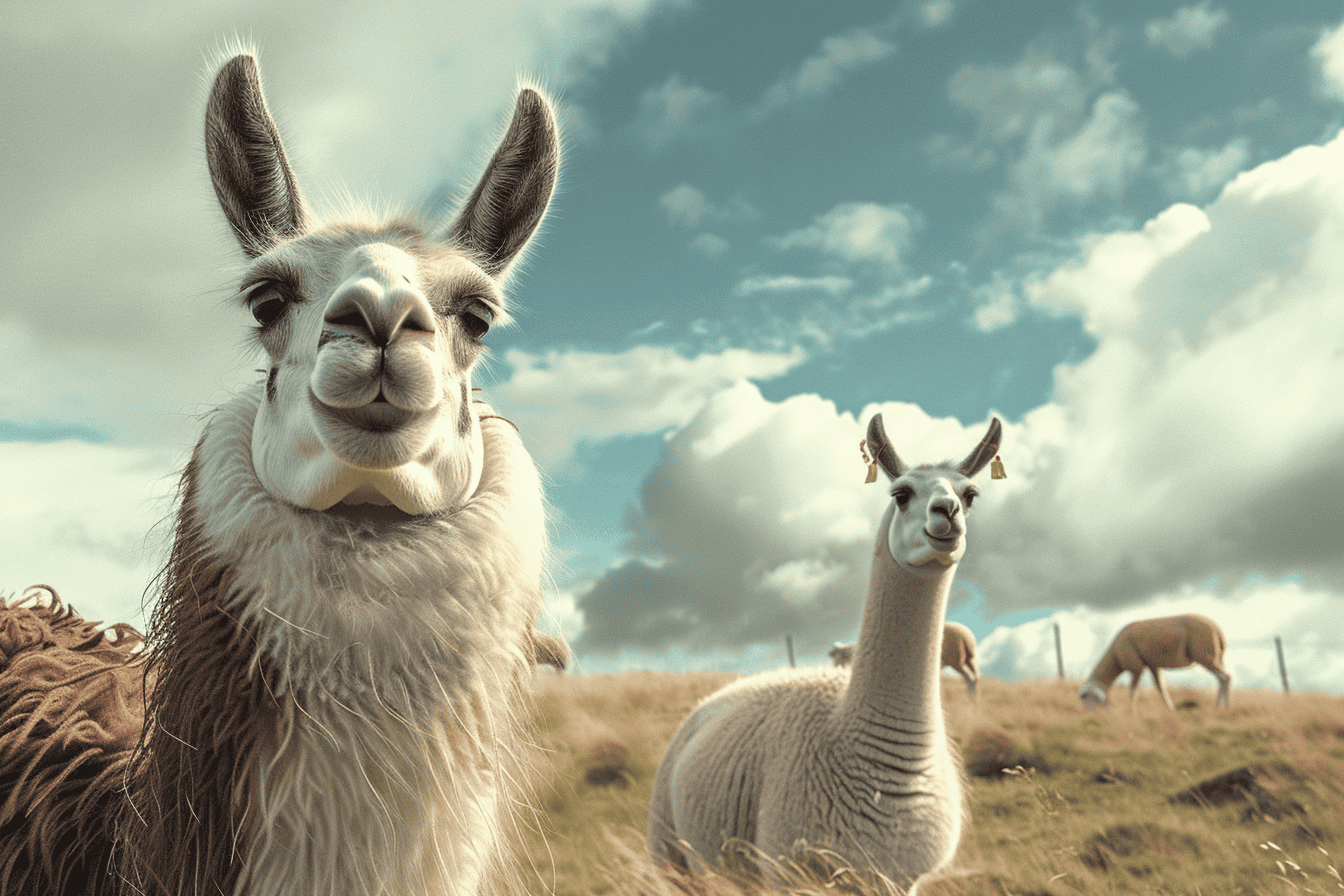
Pairing llamas can substantially enhance their effectiveness as livestock guardians.
When you use a pair of llamas, they can cover larger areas and respond more rapidly to threats. One llama typically takes the lead, while the other provides vital backup. This dynamic makes them far more efficient in protecting your livestock.
A pair of llamas can also offer each other companionship and social support, which can greatly reduce stress levels.
This companionship not only improves their overall health but also extends their working life. When llamas are less stressed, they’re more alert and ready to defend their territory and the animals they’re guarding.
In many cases, a pair of llamas is more effective than a single llama.
They can collaboratively defend against predators, ensuring a higher level of security for your livestock. Furthermore, using two llamas can distribute the workload more evenly, preventing burnout and promoting a longer, healthier working life for each animal.
Benefits Over Other Guardians
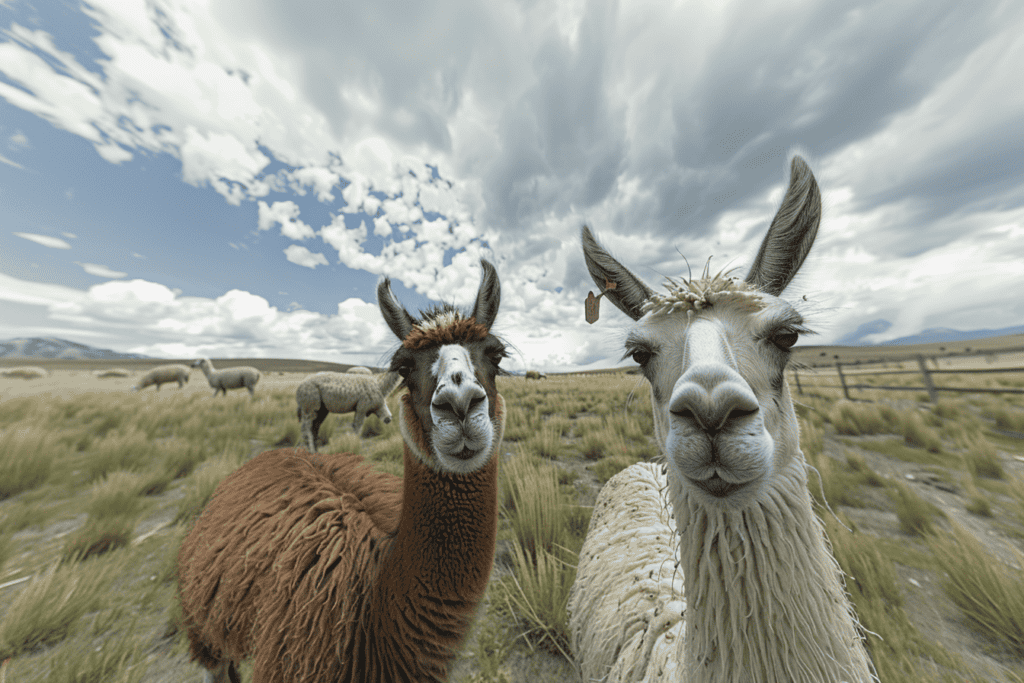
When considering the best guardian for your livestock, llamas offer several advantages over other options like Maremma dogs and alpacas.
Llamas are incredibly cost-effective, with an initial investment of around $2,000, but they boast a longer working life of 20-30 years compared to Maremma dogs, which typically serve for just 10-12 years.
For small to medium-sized flocks, llamas excel as guardian animals, making them an excellent choice for smaller farming operations.
Llamas have a powerful instinct to protect their territory and flock. Unlike alpacas, which are often seen as a cheaper alternative but don’t possess the same protective drive, llamas stand their ground against predators.
Research shows that llamas can reduce predation losses from 11% to a mere 1% among sheep farmers, particularly effective against threats like foxes.
Moreover, llamas are easier to care for than Maremmas. They require less training and handling, thriving on the same feed as sheep or goats.
This makes them a low-maintenance option that seamlessly integrates into your existing livestock management. By choosing llamas, you’re opting for a guardian that’s not only effective but also cost-efficient and easy to manage.
Frequently Asked Questions
What Types of Predators Are Llamas Most Effective Against?
You’re wondering about the types of predators llamas are most effective against. Llamas’ guarding behavior and predator deterrence work well against common predators like coyotes, foxes, and stray dogs, keeping your livestock safe and secure.
How Do Llamas Communicate With Livestock and Humans?
Llamas communicate with livestock and humans through llama vocalizations, body language, and training techniques. You’ll notice humming or alarm calls, along with ear positioning and tail movements, which help convey their messages effectively.
Are There Any Specific Breeds of Llamas Best Suited for Guarding?
You might wonder if certain llama breeds are better for guarding. Focus on llama temperament, guarding instincts, and herd integration. Typically, all llamas possess these traits, but individual personalities vary, so observe them closely.
What Health Care Needs Do Guardian Llamas Have?
You’ve got to follow a strict vaccination schedule, provide nutritional supplements, and implement regular parasite control. Don’t forget annual shearing and occasional toenail trimming to keep your llamas healthy and effective in their guardian role.
How Long Can Llamas Effectively Guard Livestock?
Llamas can effectively guard livestock for up to 20 years. Their guardian longevity guarantees a protective lifespan, providing an effective tenure from 18-24 months old, with their experience and effectiveness increasing over time.

